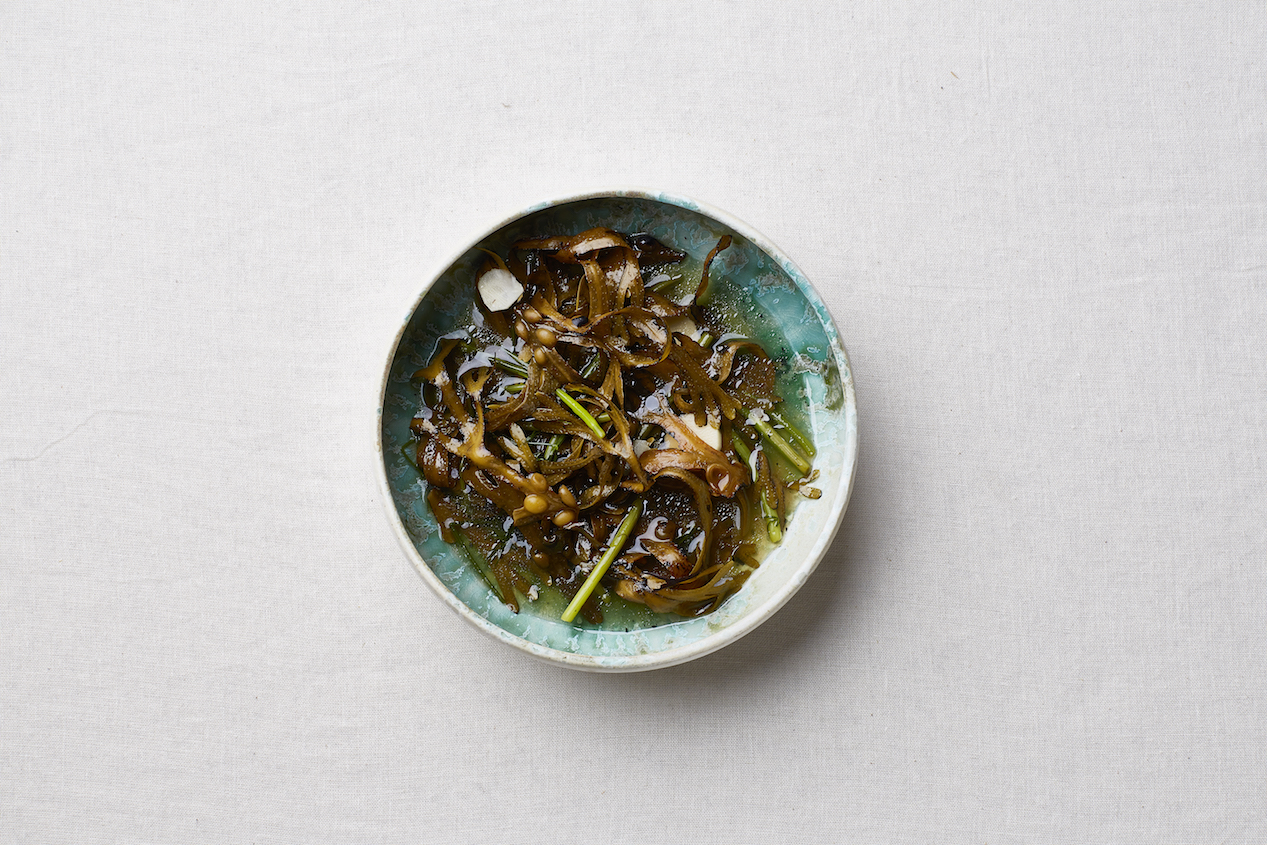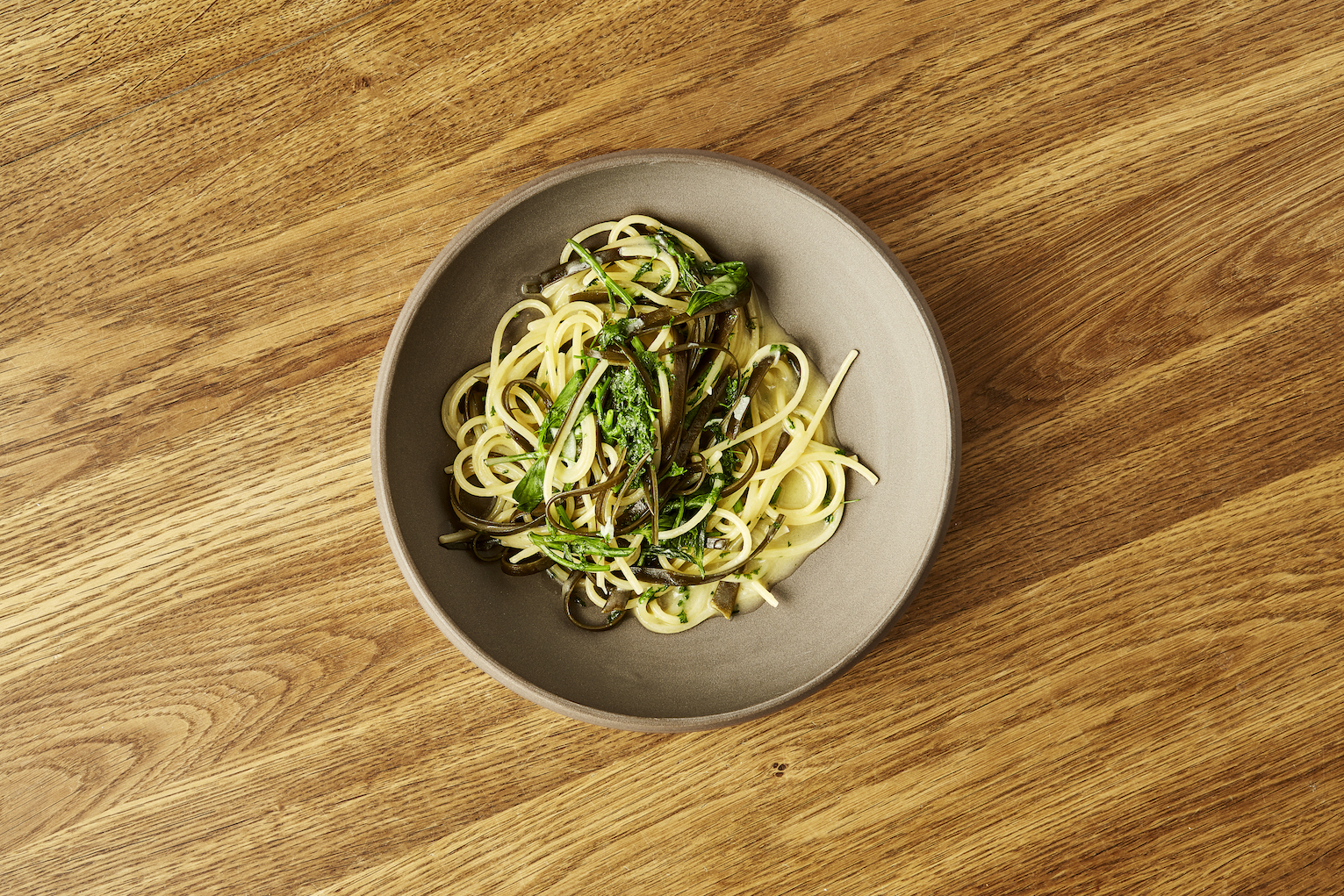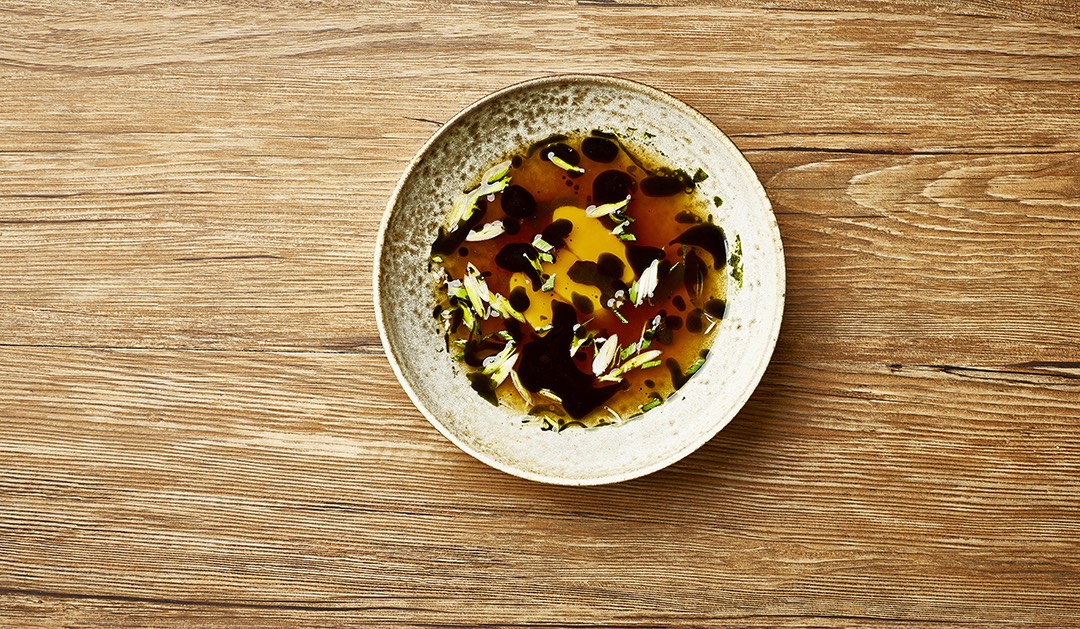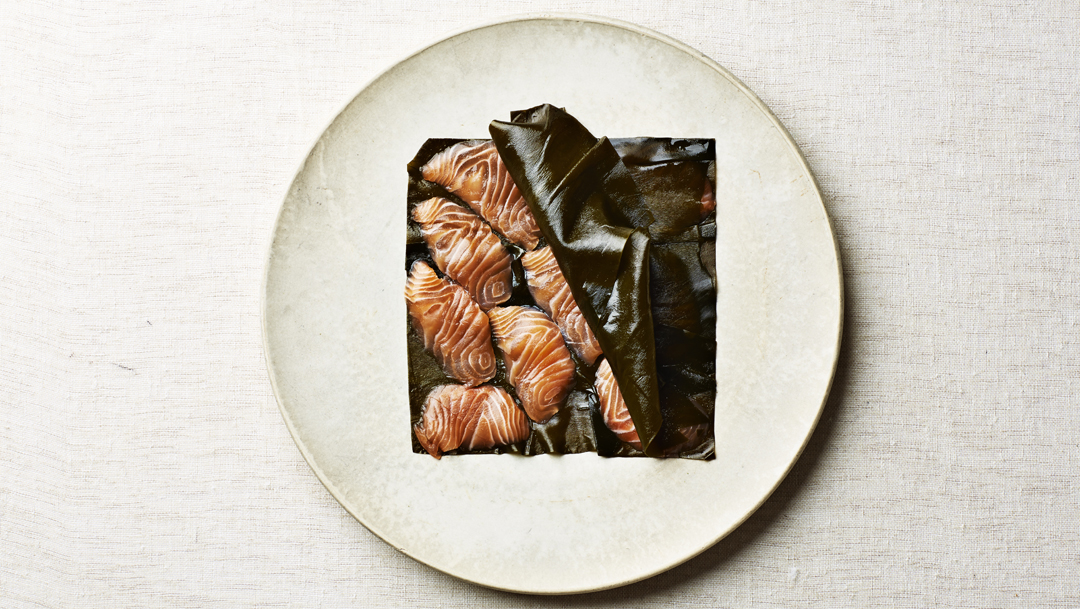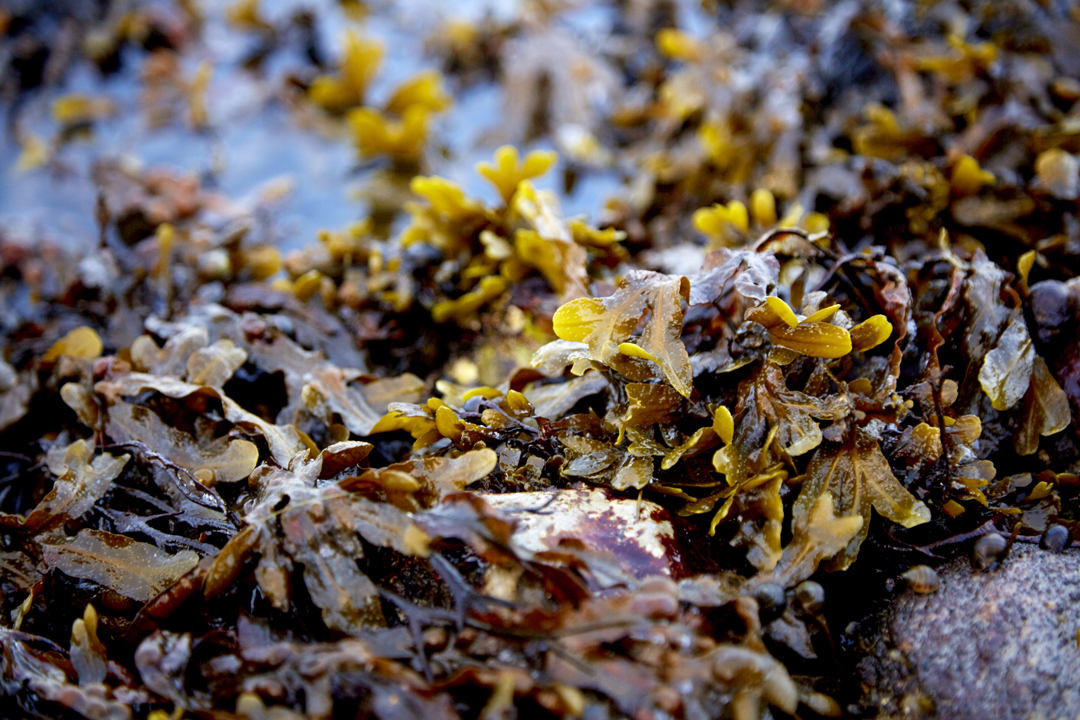
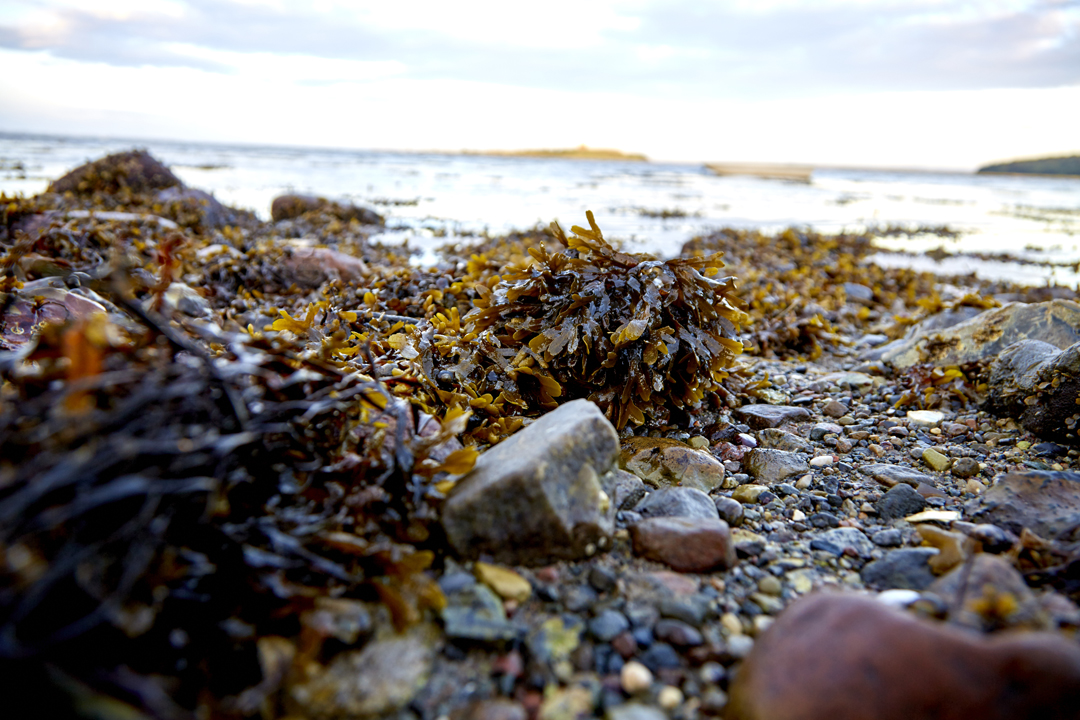
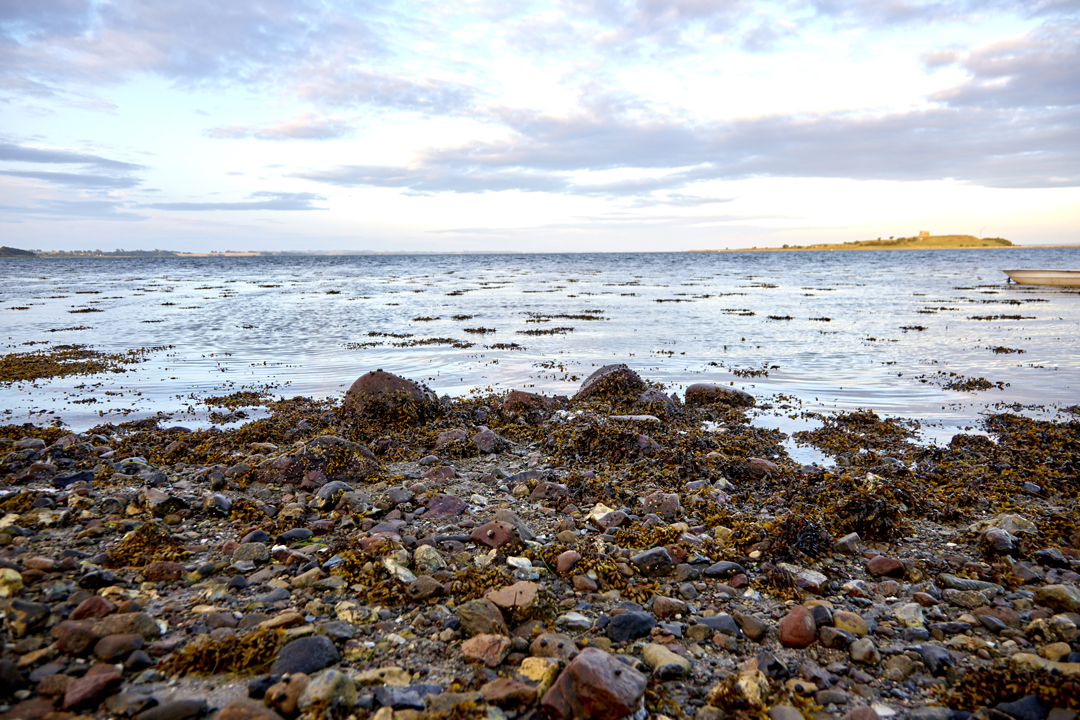
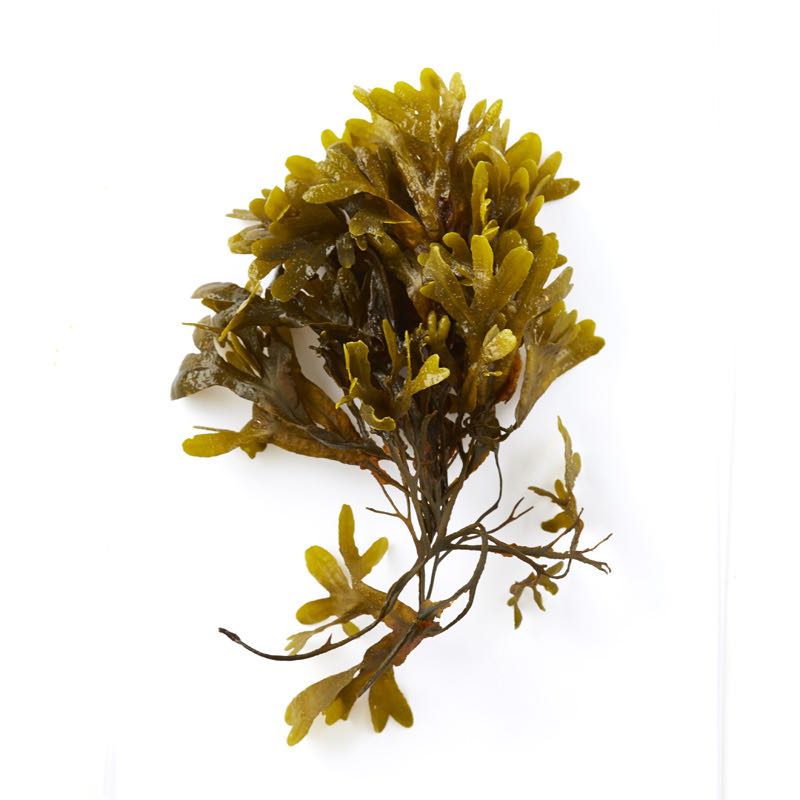
Wrack
Where the salt-laden waters meet the rocky coast, you will often find billowing, brown fields of wrack ready for picking. This is a flexible type of seaweed that can be used in a variety of dishes, from sweet to savory.
-
Where to Find It
Found along coastlines in Denmark, wrack often washes onto the beach in large, brown mats. Suctioning itself onto rocks or shells, it prefers to grow close to the shore—often in areas that will dry out at low tide. Unlike bladderwrack, which wrack is often mistaken for, it is covered in a practical layer of mucus that helps it retain moisture.
The beach.
-
When to Find It
Wrack can be harvested year round, but it is the easiest to during early spring.
Top shoots: March, April, May, June.
-
How to Spot It
Though yellow or olive green in color, wrack is classified as a brown algae. Reaching lengths of 30-40 cm, it anchors itself to rocks by means of small suction pads at its base. At the tip of its fronds, round or heart-shaped fruit bodies—called "receptacles"—store the wrack’s seeds.
-
How to Pick It
If large piles of wrack have washed up on the beach, it’s because storms and currents have torn them loose from their beds. Don’t collect washed-up wrack. Instead, stick to the fresh, live kelp that you can pick along the beach. There may be barnacles, algae or other growths on the fronds, so focus on the nicest, cleanest specimens you can find, and remove the outer shoot with scissors or a knife—this way you'll be left with the best-tasting part. Low tide makes it easier to reach live algae. You can also dive for spiral wrack; it grows 1-2 meters below the water’s surface.
Risk of misidentifying the plant
There is no risk of mistaking the plant for another dangerous or undesirable plant.


